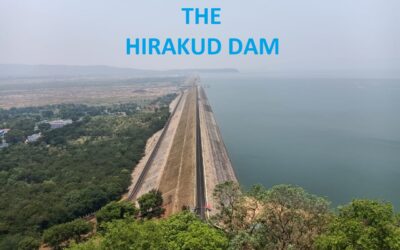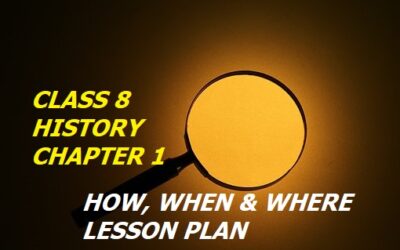The Hidden Agenda Behind Class VIII Lesson Plan Of Social Science For July
The hidden agenda behind Class VIII lesson plan of Social science helps you to explore the subject in a better way. You are more focused if you have a detailed class VIII Social Science lesson plan at the beginning of the session. You can easily use teaching aids and conduct tests if you have class VIII Social Science Lesson Plan with you.
Class eighth social science is based on concepts.
Therefore, for better interaction with students and to make the subject interesting social science lesson plan is must.
Many new teachers face problems in designing the social science lesson plan during their initial years.
Moreover, this post mainly deals with a detailed social science lesson plan of class VIII.
Hope, this class VIII Social science lesson plan helps all social science teachers.
However, I have tried to include everything from general objective to remedial measures in my class VIII social science lesson plan.
Further, You may find here Class VIII Social Science Lesson Plan For The Month Of April – May
Class VIII Social Science Lesson Plan For The Month Of June
Topics to be covered in the month of June:
Geography:
Chapter 2. Land, Soil and Water, Natural vegetation and wildlife resources.
Chapter 3. Mineral and Power resources.
History:
Chapter 2. From Trade To Territory, company establishes power.
Political Science:
Chapter 2 Understanding Secularism
_____________________________________________________________________________________________________________________
Class VIII Lesson Plan Of Social Science – Geography For The Month Of June
Chapter 2 Land, Soil and Water, Natural vegetation and wildlife resources.
Specific Objective:
Firstly, to familiarize students with land use pattern with changes in the needs of the people.
Secondly, to learn about the various types of soils and its judicious use.
Teaching Method
Tools/Teaching aids: Text Book, Black Board, chalk, Map of India, smart board, Images and PPT
Technique: Diagrammatic presentation.
To begin with, the teacher starts interacting with the students and asks few questions.
What is the use of land?
students response – for housing, forests, colony, construction of roads, etc.
Have you seen new colonies, new roads, new stadium in your town?
Students response – Yes teacher.
So, do you agree that trees have been cut to create new colonies?
Students response – yes teacher.
Therefore, this is called using the land as per the needs of the people.
Now, the teacher draws a diagram of soil profile on the board.
The teacher once again start interacting with the children.
The teacher asks what will happen if there if there is no soil or water?
Students response – teacher, there will be no forests, no animals, no life, everybody will die.
So, do you think we must protect our land, water and soil? students response – yes teacher.
Now, the teacher explains various methods of land, water and soil conservation.
In due course of time the teacher also discusses about the importance of Natural vegetation and wildlife.
Content/ Teaching Points:
- Land
- Land use
- conservation of land resource
- soil
- degradation of soil and conservation measures.
- water
- Natural vegetation and wildlife.
- conservation of Natural vegetation and wildlife.
Activity: Cross-word puzzle
Method: Play way method.
The teacher comes prepared with a cross-word puzzle.
Draws it on the board.
Based on this, row wise questions will be asked.
One child from each row will write the correct answer on the cross-word.
Objective:
To check the basic concepts through play way method.
Skills Developed:
Listening and understanding.
Assessment criteria:
Involvement and accuracy.
To get an idea on this you can click Best Role Play Activities To Improve Communication Skills
Class work:
i) MCQ’s
ii) Short and long answer type questions will be discussed and done.
Home-work:
i) Paste a few pictures the way soil gets degraded.
ii) Draw or paste the pictures of any five endangered animals.
Find out the steps taken by our government for their conservation.
iii) Read about roof top rain-water-harvesting ?
Think how can you save water at home.
Values imparted:
Firstly, Children will learn the importance of resources.
Secondly, they will be empathetic towards natural resources.
Integrated learning:
Integrating with Biology.
- What role does microorganisms play in making the soil fertile?
Integrating with Hindi/English.
Write an imaginative conversation (interview) with a tree or a wild animal which is to be cut/killed the next day.
Learning Outcome:
After the completion of this chapter, students will be able to
- Firstly, define resource and sustainable development.
- Secondly, they will also gain knowledge about the different land use pattern and conservation of resources.
Remedial Measure:
Pair and share
Children sitting on the left side of the row will explain the chapter to the children sitting on their right.
Note: To know more about natural vegetation and wildlife, you may read Class IX Natural vegetation and wildlife -Notes, MCQ’s with NCERT solutions
_____________________________________________________________________________________________________________________________________________________
Class VIII Social Science Lesson Plan Term I – Geography For The Month Of June
Chapter 2 Mineral and Power resources
General Objective:
- To enhance their basic understanding of minerals, types of minerals and their different ways of extraction.
Specific Objective:
After the completion of the chapter students will be able to
Firstly, define and classify minerals.
Secondly, Understand the spatial distribution of minerals, their uses and conservation methods and
Lastly, will develop a deep understanding about conventional and non-conventional power resources.
Teaching Method:
Tools/Teaching aids:
Coal, Iron, Gold, chart on minerals, PPT, video presentation on different types of mining.
Technique: Interactive
Firstly, The teacher enters the class with a piece of coal, iron and a chart on minerals.
To begin with, the teacher interact with the students to extract the meaning of mineral.
Further, discusses about the classification of minerals by displaying a chart/table on the board.
Secondly, the teacher discusses with the students about the uses of minerals and where they are found.
Finally, the teacher explains the importance of power resources.
Content/ Teaching Points:
- Definition of mineral
- Types of minerals
- Distribution of minerals
- Uses and conservation of minerals
- Power resources: conventional and non conventional.
Activity:
CLASSIFICATION OF RESOURCES
Method: Play way
Firstly, the teacher divides the class into six groups.
Secondly, writes the names of minerals/power resources on the board as Mica, Bauxite, Manganese, Wind, Iron, Coal, Water, Petroleum, Copper, Solar energy etc.
Further, each group will be asked to classify all the minerals/power resources under the following headings:
i) Metallic ii) Non Metallic iii) Ferrous iv) Non – Ferrous v) Conventional and vi) Non – Conventional.
Objective:
To classify minerals and power resources.
Skills Developed:
Analyzing, Reasoning and recalling skills.
Assessment criteria:
The activity will be assessed on the following three criteria:
i) Participation
ii) Involvement.
iii) Accuracy and
iv) Presentation.
Class work:
Initially, the teacher will provide brief note on every topic from the chapter.
Later on, Short, objective and long answer type questions will be discussed and done with the students.
Home-work:
- In the outline map of India, mark the major coal, iron, bauxite, mica and petroleum producing areas.
- Find out, where in India, solar, wind and geo-thermal power and Hydel power plants located.
- Read about the advantages and disadvantages of a dam? Have you heard about the Chipko-movement “?
- How safe is the highest dam of India on Himalayas. Read टेहरी बाँध : खतरा सर पर
Values imparted:
Understands the importance of conservation and eco friendly use of resources.
Integrated learning:
Integrating with Art and Craft.
Design a fuel efficient car.
Learning Outcome:
After the completion of the chapter, children will be able to
i) identify minerals and their use.
ii) understand the importance of fuel efficient resources.
iii) Develops abilities related to problem solving.
Remedial Measure:
Extra time will be given to the slow learners after the school hours.
You may be interested in reading:
Class IX Natural vegetation and wildlife -Notes, MCQ’s with NCERT solutions
___________________________________________________________________________________________________________________________________________________
Class VIII Lesson Plan Of Social Science – History For The Month Of June
Chapter 2 From Trade To Territory The Company Establishes Power
General Objective:
To make the students aware of the fact how a British trading company became the rulers of the vast empire without any war.
Specific Objective:
To familiarize students with English trade settlements in India and the consequences of colonization.
Teaching Method:
Tools/Teaching aids:
Text Book, Map of India and World.
Technique: Story telling method
To begin with, the teacher first explains the meaning of colonization.
Then, discusses about the new sea routes.
Further, the teacher will discuss about the battle of Buxar and battle of Plassey.
Children will also watch a short video on the battle of Plassey.
After watching the video, children will easily understand how Britishers expanded trade in Bengal.
Moreover, East India company not only occupied the trade but the company officials also became Nawabs.
They also began collecting revenue from a large part of Bengal.
Also forced the peasants to grow indigo.
The teacher describes the play “Neel Darpan” written by Dinabandhu Mitra.
This play describes about the poor condition of Indigo farmers.
Now, the teacher explains about the expansion of company’s rule.
Here, the teacher mentions about the bravery of Haider Ali and Tipu Sultan.
Content/ Teaching Points:
- East India company comes East
- East India company begins trade in Bengal.
- How trade led to battles.
- The Battle of Plassey
- Company rule expands.
- Tipu Sultan – The Tiger of Mysore
- War with the Marathas
- The Company army.
Activity – 1:
Role Play
Stage a class play on the Betrayal of Siraj ud Duala
http://https://www.youtube.com/watch?v=denj_sZzv2c
Method: Play way
Firstly, the teacher divides the class into two groups.
Secondly, group 1 will be given the task to write the script.
Thirdly, group 2 will decide the role to be played by the children.
Fourthly, after the completion of the script, Group 2 will be given one day to learn their dialogues.
Finally, group 2 students will perform in the class.
Objective:
To understand Battle of Plassey.
Skills Developed:
Leadership, communication and organizational skills.
Assessment criteria:
The activity will be assessed on the following four criteria:
i) Creative writing
ii) Relevance of content.
iii) Expressions and dialogue delivery.
iv) Factual details.
Class work:
Initially, the teacher will provide brief note on every topic from the chapter.
Further, Short, objective and long answer type questions will be discussed and done with the students.
Home-work:
- Read about the role of Tipu Sultan and the battles he fought with the Britishers.
- Find out the reason behind Dalhousie’s Doctrine of Lapse.
Values imparted:
Understands the importance of conservation and eco friendly use of resources.
Integrated learning:

INTEGRATING HISTORY WITH GEOGRAPHY
Integrating with Geography
First, Look at the picture of various commercial crops (spices).
Further, Identify each one and write their names and
Finally, mention about the type of soil, Rainfall and Largest producing state.
Learning Outcome:
After the completion of the chapter, children will be able to understand
Firstly, the problems faced by the British East India company while setting up trade with India.
Secondly, How trade led to battles between the company and Indian rulers.
Finally, Strategies adopted by the company to expand its rule in India.
Remedial Measure:
The teacher will develop unique strategy for slow learners by using audios and visual materials as per their needs and interests.
You may be interested in reading:
NCERT NOTES OF CLASS 7 GEOGRAPHY CHAPTER 1 ENVIRONMENT
_____________________________________________________________________________________________________________________________________________________
Class VIII Lesson Plan Of Social Science – Civics (Pol. Sc.) For The Month Of June
Chapter 2 Understanding Secularism
General Objective:
Firstly, to develop interest in the subject.
Secondly, to make them understand that in India all religions are treated equally.
Specific Objective:
Firstly, to develop an understanding of the “rule-of-law“.
Secondly, understand the vision and values of the Indian constitution.
Teaching Method:
Tools/Teaching aids:
Text book, PPT’s, Videos .
Technique: Interactive
The teacher begins the class by asking simple questions.
You belong to which religion? Students response – Hindu, Christian, Muslim, Jain, Sikh…..
Which religion do you think is the best? Students response – Hindu, Christian, Muslim, Jain, Sikh….. all.
Very Good.
All those who said Hindu religion is the best, please stand up, I have a question for you.
Have you read Vedas, Quran, Guru Granth Sahib or Bible? Students response – No teacher.
So, without reading or knowing about the other religions how do you know which religion is the best? Students response – ????
Therefore, all religions are good.
Every religion teach us good things.
People in every religion may be good or bad.
But for that can we blame the religion? Students response – No teacher.
That is why, our leaders decided that all religions will be treated equally in India.
They wanted to make India a unique country full of varieties in Religion, Castes, Languages, Dress, Food etc.
Do you know which word our leaders have used for India in our constitution – Secular country.
And what is the meaning of a Secular country?
It means all religions are same and will be treated equally.
When the children take interest in the topic, the teacher explains why is it important to separate Religion from the state?
Content/ Teaching Points:
- Understanding Secularism: Introduction.
- What is Secularism
- Why is it important to separate Religion from the state?
Activity – 1: Individual activity
The teacher asks the students to open their school diary and note down the names of Holidays related to religious festivals.
Method: Play way
Objective:
To know how in India every religion is given equal importance.
Skills Developed:
Broader thinking.
Assessment criteria:
This activity will not be assessed.
Class work:
The teacher will discuss the questions given in the text book.
Home-work:
Make a collage of all religious festivals which we celebrate in India.
Values imparted:
Respecting diversity and equality.
Integrated learning:
Integrating with sports:
Name any three cricket players who belong to different religion but have played for the country.
Also Paste their photographs and mention their contribution in short.
Learning Outcome:
- Understands the vision and values of Indian Constitution.
- Develops an understanding that all citizens can practice their religion with freedom.
Remedial Measure:
Pair and Share.
Slow learners will clear their doubts from their classmates.
You may be interested in my other popular Social Science Posts in Hindi.
एनसीईआरटी सामाजिक विज्ञान कक्षा 7 भूगोल अध्याय 5 “जल”
भारत – आकार और स्थिति एनसीईआरटी कक्षा 9 भूगोल
_____________________________________________________________________________________________________________________________________________________
Class VIII Lesson Plan Of Social Science For The Month Of June
Conclusion:
I hope You will find class VIII Lesson Plan of Social Science of great help.
For the complete Social Science Lesson Plan For Class VII and Social Science Lesson Plan For the month of April – May click on the given link.
This year CBSE has also integrated one state with the other.
Therefore, Projects like Integrating Bihar with Tripura and Mizoram Under Ek Bharat Shreshtha Bharat and
Integrating Chhattisgarh with Gujarat – Complete Guidance are getting very popular these days in good schools.
Was this lesson plan helpful to you? Write your views in the comment box. For copy-paste option, write to me directly.





Thank you very much sir,for your valuable guidance for the lesson plan.
Thank you, it was a great help to improve my teaching with activity mentioned in the lesson plan
Thank you Reshma for your positive response and support. Keep visiting shapingminds.in
Thanks and Regards,
Avinash Sharan
Very good lesson plan
Thanks Momi